Hiroshima Atomic Bomb Dome
|
The most famous landmark in Hiroshima is the Atomic Bomb Dome ("Gembaku Domu" in Japanese) next to the Aioi river, one of five or six rivers in the city. When the bomb exploded, thousands of badly burned residents threw themselves into the rivers to ease the pain. Many of them didn't survive, so there were hundreds of corpses in the water. |
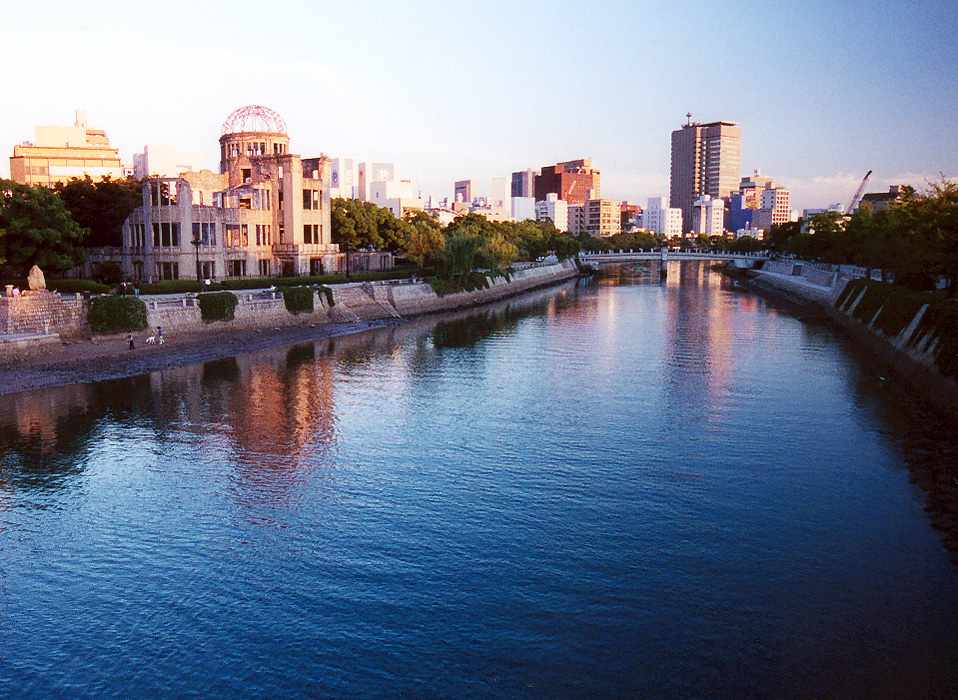 |
|
The building's original name was the Industrial Promotion Hall, and it was considerably larger than the remains left after the explosion (the Peace Museum has a model of the building before the blast). It was one of the few buildings left standing within a two kilometer (one and a quarter mile) radius of the explosion, which in this photo is about a hundred meters directly beyond the dome itself. It's remarkable that anything of the building survived at all, because it's estimated that the shock wave from the bomb created a pressure of 35 tons per square meter at the hypocenter. |
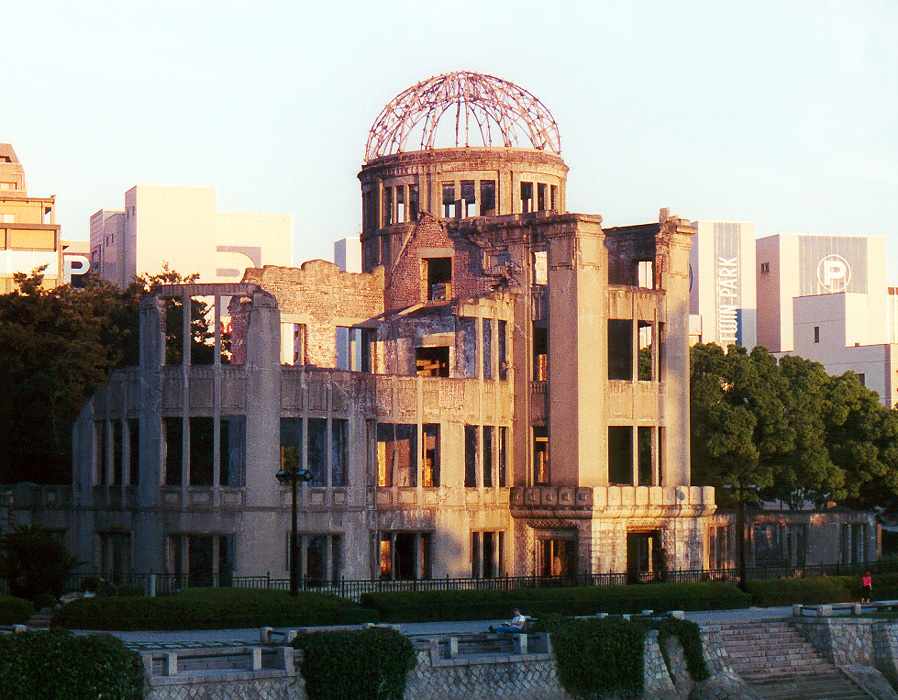 |
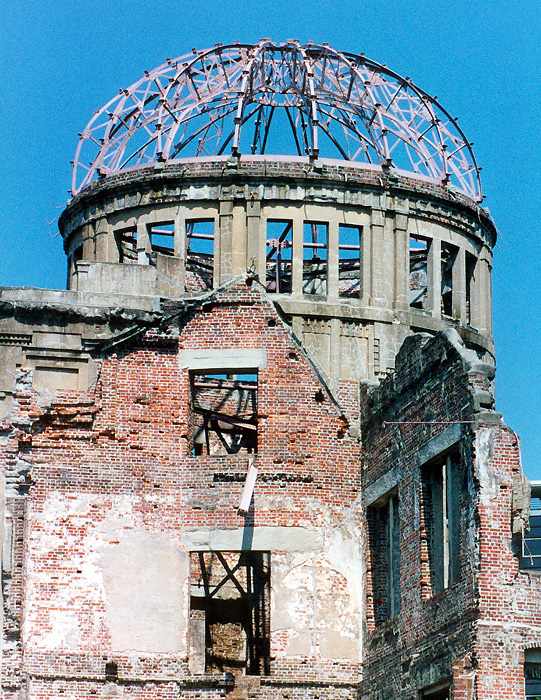 |
The bridge over the river also survived, although examination of it at the time revealed that after being released from the shock wave compression, the entire roadway on the bridge sprang up into the air several meters before landing back down. However, the damage was repaired and the bridge remained in service for about 30 more years. A very few structures in the area, such as the Bank of Japan building, were repaired afterwards and are still used today. |
|
The Atomic Dome itself was too badly damaged to be saved. |
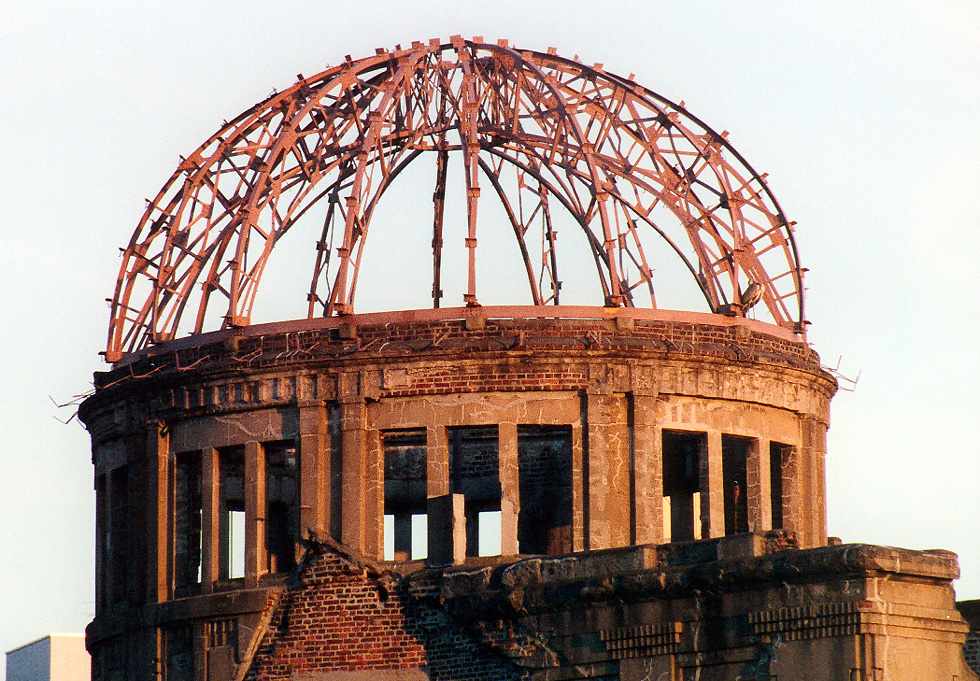 |
|
It was really a very attractive building, making it a fitting memorial to what happened. It's well worth walking around and looking inside to get some sense of the devastation. |
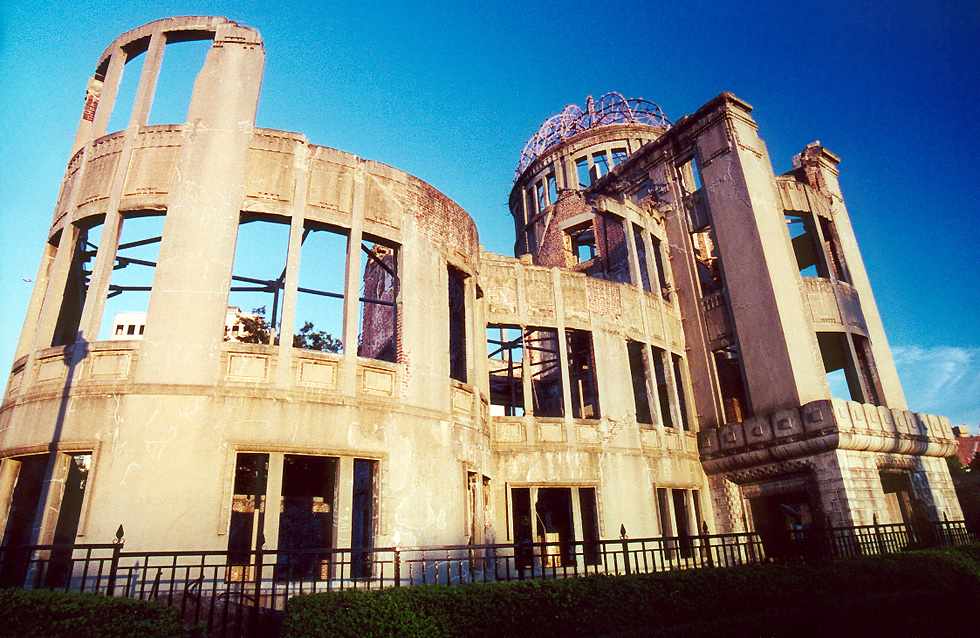 |
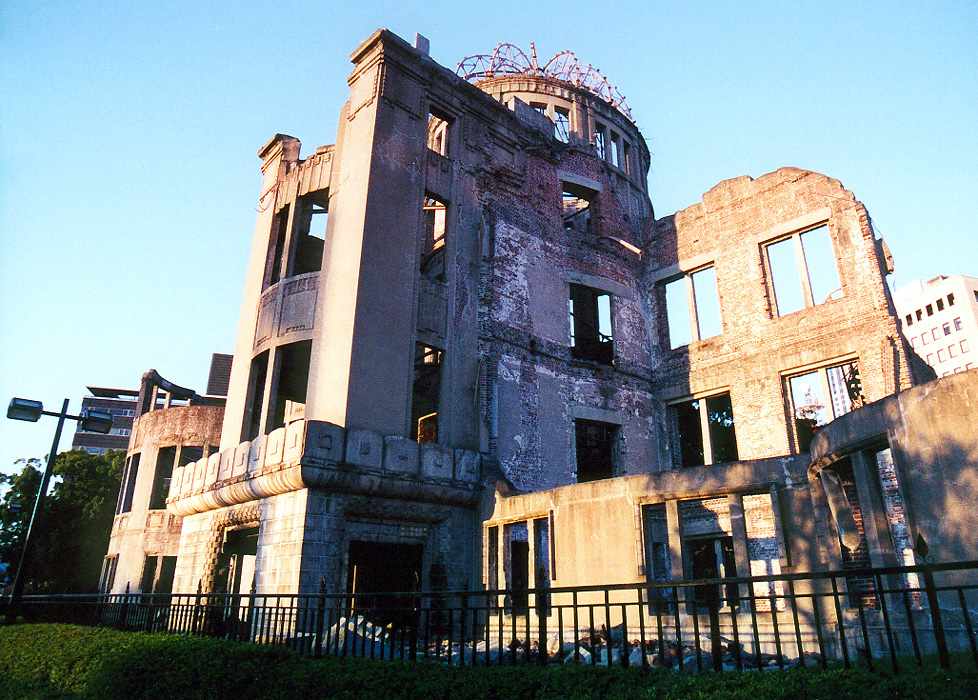 |
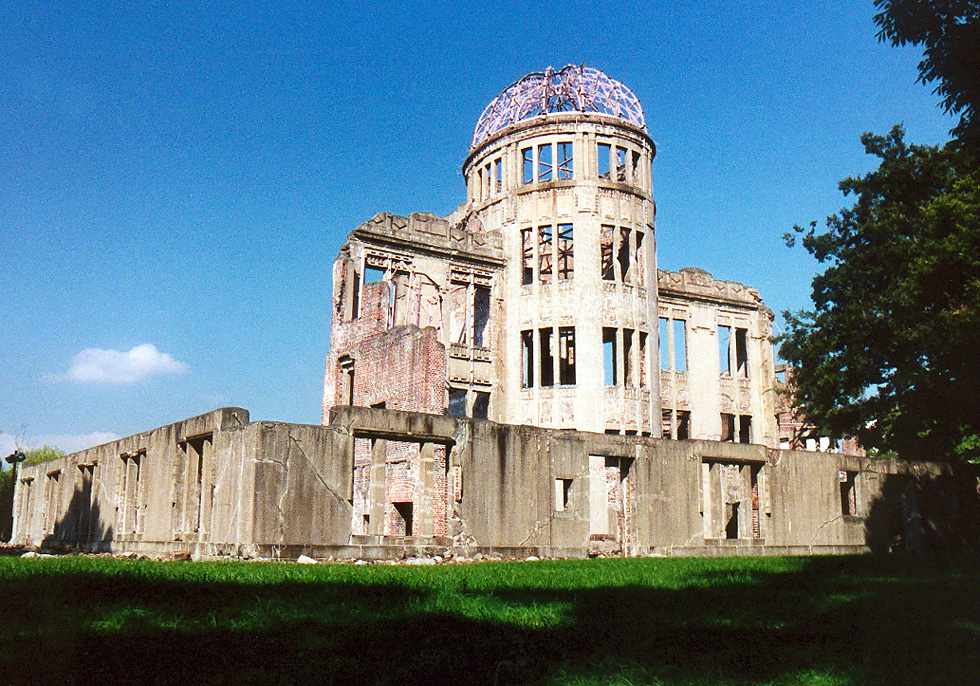 |
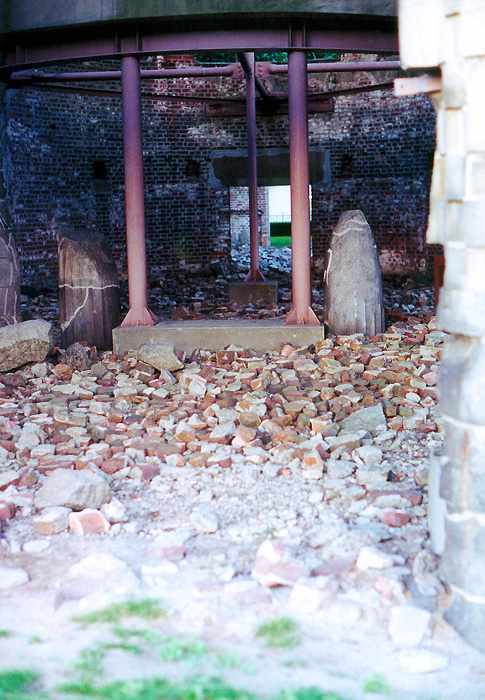 |
Over the years it's deteriorated further and has had steel girders fitted internally to prevent it from collapsing. |
|
It's worth visiting again at night, when it's bathed in ghostly green light. |
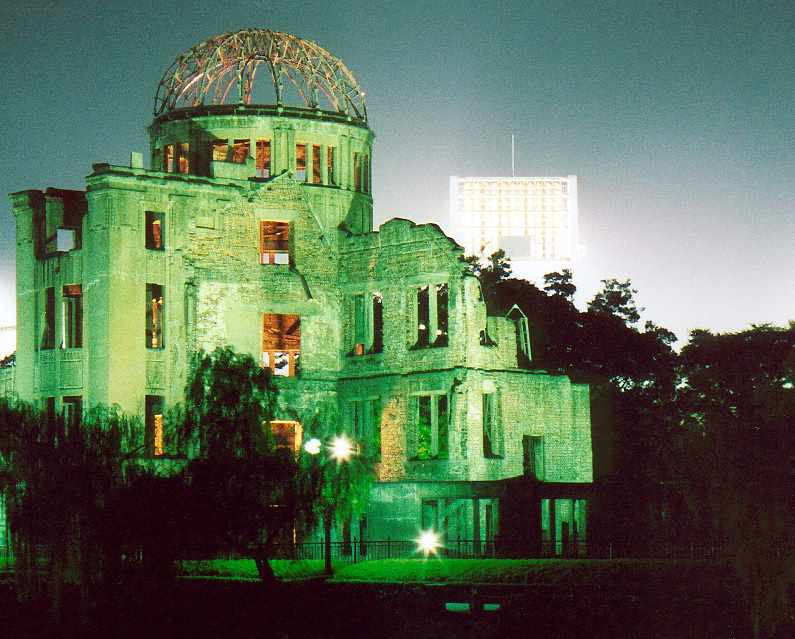 |
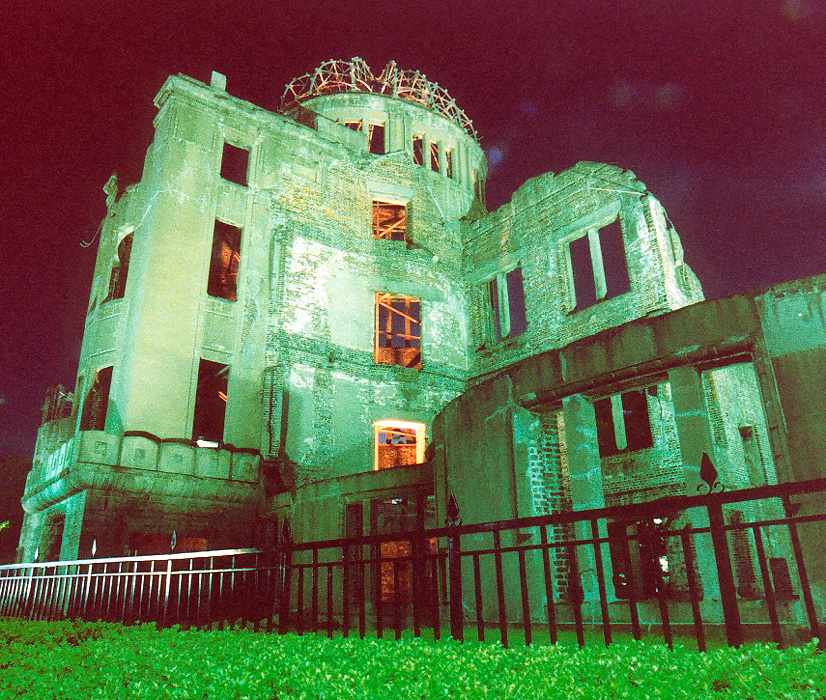 |